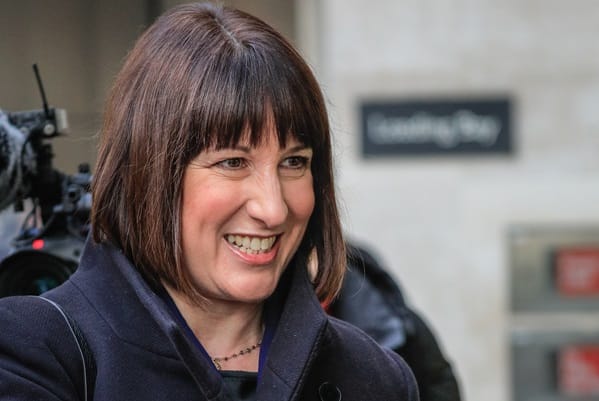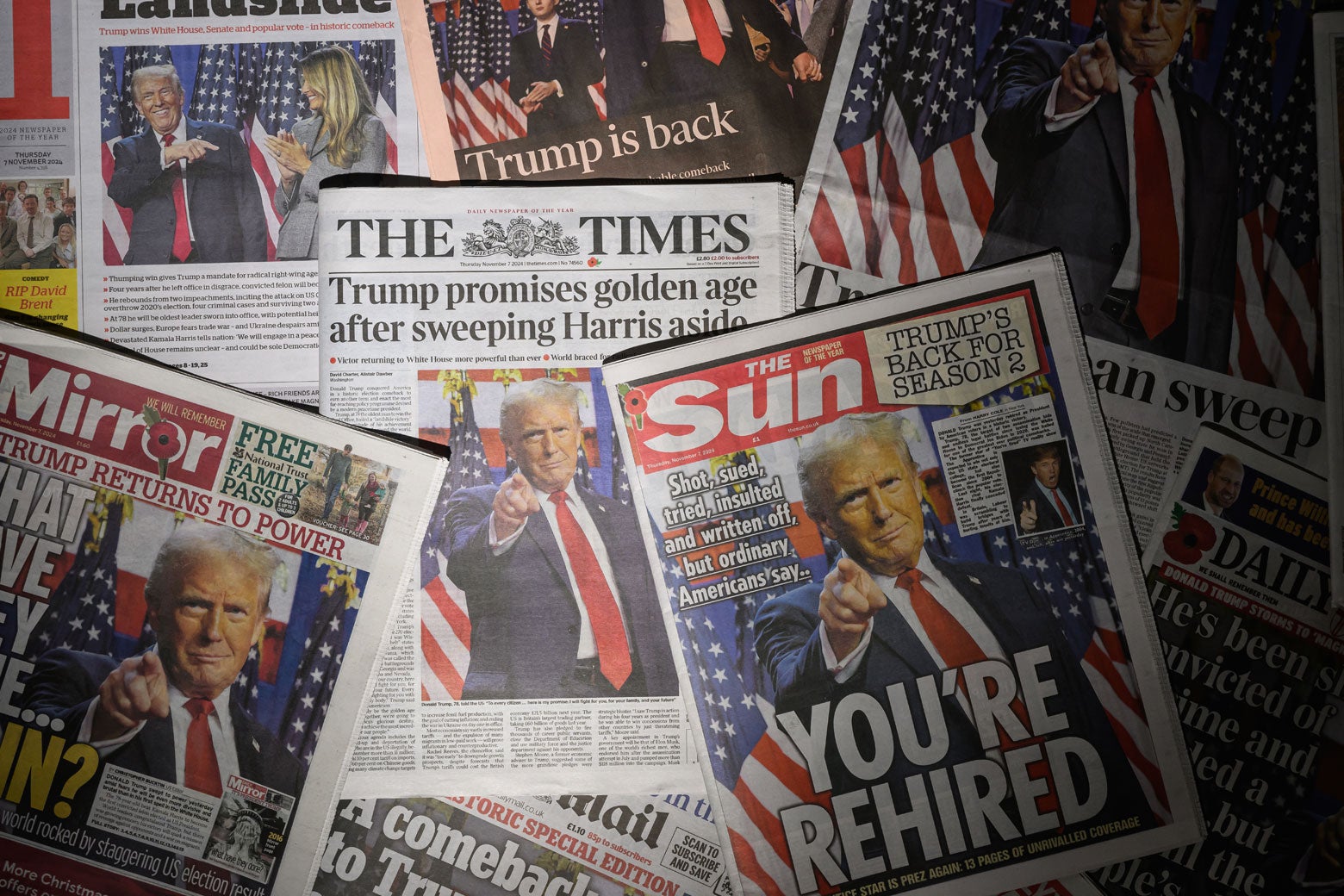World
Tuesday briefing: How public celebrations like New Year’s Eve became private events

Good morning. If you’re planning to go out in a big city on New Year’s Eve, it is more likely than ever that your festivities will be sponsored, guarded, overpriced and restricted. In London, Edinburgh – although not this year, as Hogmanay celebrations have been cancelled because of forecast storms – and many other cities in the UK and around the world, public squares that were once understood to be a shared space for anyone who cared to use them are now often under the control of private companies, contracted by the authorities to keep people safe, keep them spending money – and even keep them away.
This change is predicated on the idea that an unmanaged crowd is a dangerous, mindless thing that can lead even the most upstanding citizen into some sort of barbarism. In his superb new book, Multitudes: How Crowds Made The Modern World, Dan Hancox argues that this isn’t true – and that, instead, being part of a free-roaming festive crowd is among the best things about being a human being.
For today’s newsletter, I spoke to Dan about the fascinating, bleak changes to how new year crowds are allowed to assemble, and what those changes reveal about modern society. I hope you find an unbranded celebration that lets you roam wherever you want tonight, and here are the headlines.
In depth: ‘There is something instinctive about congregating with strangers when something exciting happens’
Thanks so much for doing this, Dan. One thing that might be a useful way to begin is by explaining the distinction you make in the book between “closed” and “open” crowds. What’s the difference? And which kind is a New Year’s crowd?
A closed crowd is something like a concert hall or a football stadium – somewhere with secure perimeter fencing with paid-for tickets nearly always as a condition of entry, and with a bunch of other conditions of entry as well. You’re entering into, usually, a private space, and you’re paying for the privilege to do so, and your behaviour sort of responds accordingly. You’re more likely to sit still in the seat that has been assigned to you and to comport yourself according to the social norms of that particular space.
Open crowds in the modern city are increasingly rare. And New Year’s Eve crowds are a very good example – a rare example – of a substantial urban open crowd in which there is theoretically no boundary, that people freely leave and join and move around in without any kind of authority. You get this at Notting Hill carnival [in west London]. You might get it when, say, the Lionesses win the Euros and people spontaneously gravitate towards the city centre to celebrate, but nobody has particularly summoned them there to do so. Most protests are open crowds too, even if they have stewards in yellow jackets, marshalling the edges. It’s about your freedom of movement to join and leave.
In recent years, as part of a wider change in the way people in cities are policed, new year celebrations have become more likely to be closed crowds with particular areas that you’re allowed to be in, and ticketing and more heavy-handed security. What does that change about the experience?
That is absolutely the trend of the last decade, to turn those open crowds into closed crowds, and New Year’s Eve is a prime example of that. In cities like London and New York and Sydney, you have what was hitherto an assembly of up to a million people, sprawled quite messily across the city in an attempt to join the throng, being quite heavily securitised.
In London, it was Boris Johnson in 2014 who introduced ticketing for the fireworks for the first time. And with the ticketing, you get a cavalcade of other conditions – fencing, stewarding, security guards, closer surveillance, and now also stratified ticketing, where you can pay more for a “better” service. It has the effect of compartmentalising the crowd, because an open crowd is viewed as dangerous and suspicious by people in power. It’s a very clear hierarchy of wealth and class that revives the way cities were constructed in the 18th and 19th centuries.
The current mayor, Sadiq Khan, was critical of it at the time, saying that this was purportedly about safety but was really about monetising people’s good time – but then when he was elected, he kept it. Ticket prices start at £20 and go up to £50 for a better view. They’re already sold out for this year. There’s also a company offering new year packages where you get a boat for 12 people to float down the Thames for £5,775.
One of the big consequences of this, which I think is a real demerit, is that you just get many fewer people coming – in London, it’s down from a million to 100,000. The same thing is true in Sydney and in other places where the same thing has happened. It works quite consciously as a dispersal method, which should be antithetical to what they want, which is a thriving, buzzing city.
You quote Elias Canetti, who wrote a book called Crowds and Power in 1960, and says that what people want in a crowd is a “blessed moment, when no one is greater or better than another”.
I would say that it cuts against the spirit and the fun of joining the crowd. The new year’s crowd is essentially the carnival crowd, by which I don’t mean Notting Hill or Rio but this ancient spirit of carnival – the moment where the pauper is the king and vice versa, and everyone in the village is allowed to escape the bonds of the usual hierarchy in the name of a good party. If you’re being compartmentalised according to taste, wealth, mobility that goes against something innate in us.
There’s this brilliant Finnish expression, torilla tavataan, which literally means “to the town square”, but is used figuratively as an expression of joy, say when your team has just won the ice hockey. It reveals something really important: the crowd belongs in the public square and the public square belongs to the crowd, and there is something instinctive about congregating with strangers when something exciting happens.
A thread through a lot of what you’re talking about is the growth of the events industry. One of the most memorable examples of how they have changed things was the story in 2019 about festival organisers Underbelly making people in Edinburgh apply for access to their own homes if they lived within the “street party area”, and restricting whether they could have their own New Year’s Eve parties.
after newsletter promotion
That’s like a hyperbolic example of the kind of thing we see more generally – where a very heavily commercialised events industry traps something free and organic. There have always been events, and there have always been people organising them, and often monetising them. But the growth of the urban events industry in the past two decades is extremely striking, and it’s now a key part of the post-industrial city’s economic mix – both in attracting tourism, but also just encouraging people who live there to spend their disposable income.
It’s also important to say that this isn’t just about the organisation – it’s also about how the city is constructed. Most cities in the west have more and more fences, metaphorically and literally, and there are more and more spaces that appear to be public and are actually owned by private developers. They’re known as privately owned public spaces, or POPs for short. And that has had a huge impact on how crowds behave and where they are able to assemble.
But although it’s accelerated significantly, it’s also not a new phenomenon. Trafalgar Square is a great example: when it was first laid out in the early 19th century, the Chartists were on the rise, and there was real clamour and public protest about the extension of the electoral franchise. And because of the concern of the vast amount of space Trafalgar Square offered, after a year or so they added the vast fountains – they take up almost half the entire space, and the only reason they are so big is because it reduces the space available for the crowd by half. So the authorities have always been concerned about large crowds, and will try to mitigatethat by designing them out.
Is there any truth to the idea that the only way to make a crowd safe is to make it smaller – or that you need this level of oversight to look after people?
It is a genuine and important concern – over 150 people died in Seoul in South Korea only a couple of years ago in a horrendous Halloween tragedy on very narrow streets. But the leading crowd safety experts say that all crowd crushes are avoidable with the right preparations. And I wonder if, with New Year’s Eve, safety is being used as a bit of an excuse.
The best counter example is Notting Hill carnival, where about a million people a day throng, generally safely, in a tiny little web of streets where 40,000 people normally live. I spoke to the CEO of the carnival trust, Matthew Phillip, and he told me that the first thing he did when he took over was remove a lot of the barriers. That may sound counterintuitive, but the evidence is that the best way to ensure safety is to give them freedom of movement. Bottling people up just makes crushes more likely.
You cite Barbara Ehrenreich, who argued that in the 20th century “a truly participatory, popular, cultural and festive life was transformed into pure rock’n’roll spectacle”, and that you could view that as the conclusion of a centuries-long effort to tame audiences. Do you see the new year crowd as an extension of that phenomenon?
The trend of the past 50 years is of the capture and containment of public festivities. They are just too unruly to make enough money from to be allowed to continue. But that attempt to bring the festive crowd to heel should be pushed back against. Yes, what’s happened in cities like London has made the crowd smaller, perhaps made it better behaved, but also made it less free. That’s a shame, because we have an evolutionary imperative to get together with strangers for a good time, and it’s what we should all be doing on New Year’s Eve, whether or not we can afford a ticket.
Reading this online or on the Guardian app? Over Christmas period the headlines and sport will not appear, so to get the First Edition experience in your inbox every morning, sign up here










